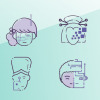Testing and Quality Assurance
 |
Key Enablers for Continuous Testing Continuous testing means testing before, during, and after each software change is made. Testers have long advocated for this, but DevOps has made it more popular by pushing for rapid feedback and shifting testing left in the lifecycle. Here are three practices your company should embrace to enable continuous testing. |
|
 |
Designing Data Models for Self-Documented Tests When testing applications, documenting and interpreting test results can be a challenge. Data models enable us to collect and process test data more dynamically and uniformly. To design effective data models for self-documented tests, there are three important things to consider: what to document, collect, and report. |
|
 |
Change Is Hard, but BDD Is Worth It Behavior-driven development is a methodology change that impacts the whole team, and unfortunately, it’s not as easy as writing scenarios in a specific format. What is the added value of BDD? Why should the team throw their current process out the window and try to incorporate a new methodology? Here are some reasons. |
|
 |
When Field Testing Isn’t Possible, Use Simulation Field testing is great for discovering different situations, but due to a variety of constraints, it may not always be possible. In such cases, simulation is useful to create a picture that mimics the real scenario. You can replicate hardware, operating systems, network ranges, and more, as well as nonfunctional areas. |
|
 |
Using Design Thinking to Create Better Test Cases Design thinking is a user-centric framework to solve a business challenge by delivering the best user experience. Using design thinking, you can better frame the business drivers, select the right persona to focus on, design your user journey, identify test scenarios, pinpoint user pains, and write better test cases. |
|
 |
Building Culturally Inclusive AI Models For us to build the most effective technology, we need to learn from our past and build our future with more comprehensive data sets with cultural intelligence. This means AI that recognizes your story, chatbots that speak to you more authentically, and smart assistants that have inclusive data about your ancestry. |
|
 |
DevOps Transformations for QA Teams: A Slack Takeover with Stacy Kirk Thought leaders from the software community are taking over the TechWell Hub to answer questions and engage in conversations. QA architect an agile coach Stacy Kirk, founder of QualityWorks Consulting Group LLC and nodeqa.io, hosted this Slack takeover and discussed improving teams by implementing DevOps practices. |
|
 |
Transitioning to Testing: The Qualities We Should Be Looking For Testing is an accessible career choice for people who don't come from the typical paths into a tech job. Previous jobs and formal education should matter less than the abilities to observe, identify risks, and report that information. How can we change our interview processes to highlight these skills and mindset? |








